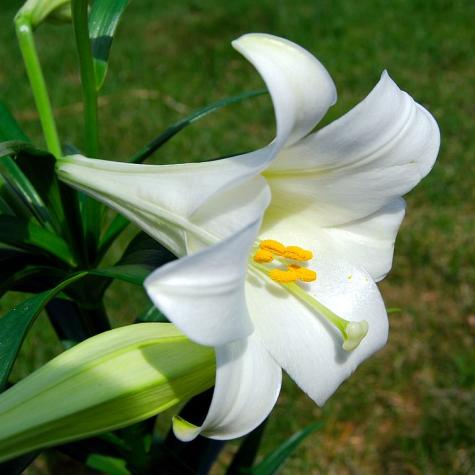COLUMBIA, Mo. – The Easter lily used for spring decorations can provide beauty and fragrance for another season.
After blooming ends, plant Easter lilies outside as soon as the ground can be worked, says University of Missouri Extension horticulture specialist Jennifer Schutter. The following year, they will bloom in June and have a sweet fragrance.
Select a sunny site with well-drained soil. Plant the top of the bulb 6 inches below the soil’s surface. Cut off old blooms but leave the stem and leaves intact. Do not cut back the stem until it dies down in the fall, says Schutter. At that point, cut it off at the soil’s surface.
Spread mulch around lilies to hold in moisture and provide weed control. Reapply in the fall, if needed, for added winter protection. Do not remove mulch until growth appears in the spring.
Despite a sales window of two weeks, lilies rank fourth in the wholesale potted plant market in the United States, behind poinsettias, mums and azaleas. Ninety-five percent of Easter lily bulbs come from the “Easter Lily Capital of the World” along the California-Oregon border. Most of the nearly 12 million bulbs go to greenhouses in the U.S. and Canada.
“Nellie White” is the most popular cultivar in the United States. The large trumpet-shaped white flowers are known for their fragrance. Grower James White named it after his wife.
Schutter offers tips on choosing an Easter lily:
- Choose one with flowers of various stages of bloom to lengthen its bloom life.
- Pick one with dense, rich green foliage, a sign of a healthy root system.
- Look for signs of insects and disease on the buds, flowers and foliage.
- Choose a well-proportioned plant that is 1-2 times as tall as the pot.
At home, place lilies away from drafts, ripening fruit and dry heat sources such as appliances or heating ducts. They do best in bright, indirect light with daytime temperatures of 65-75 F. Water only when the soil feels dry to the touch.
To prolong the life of the blossoms, remove the yellow anthers (pollen-bearing pods) found in the center of each bulb.
Photo:
Easter lily
Easter lily. Photo by UpstateNYer, CC BY-SA 3.0, via Wikimedia Commons.
